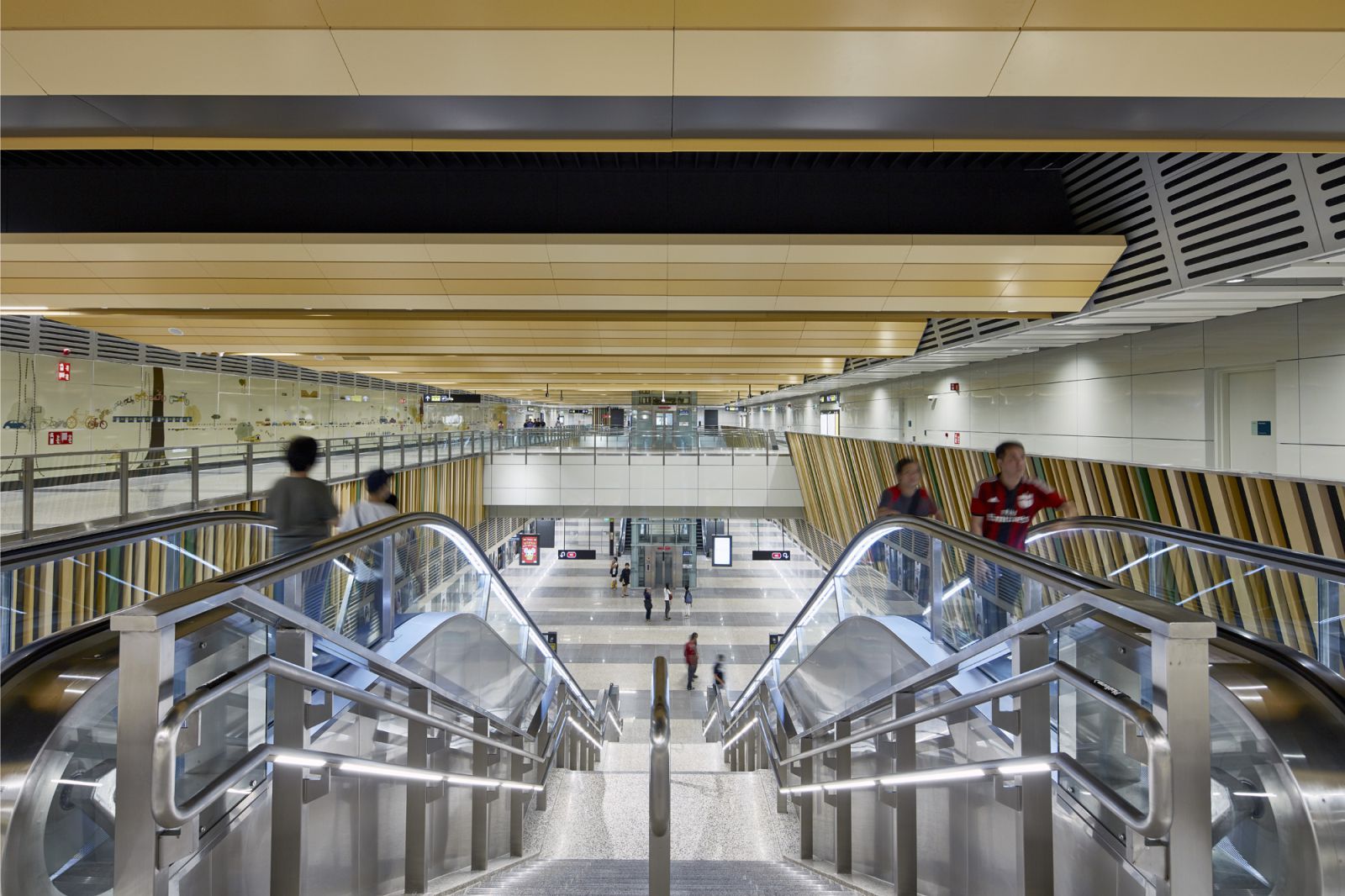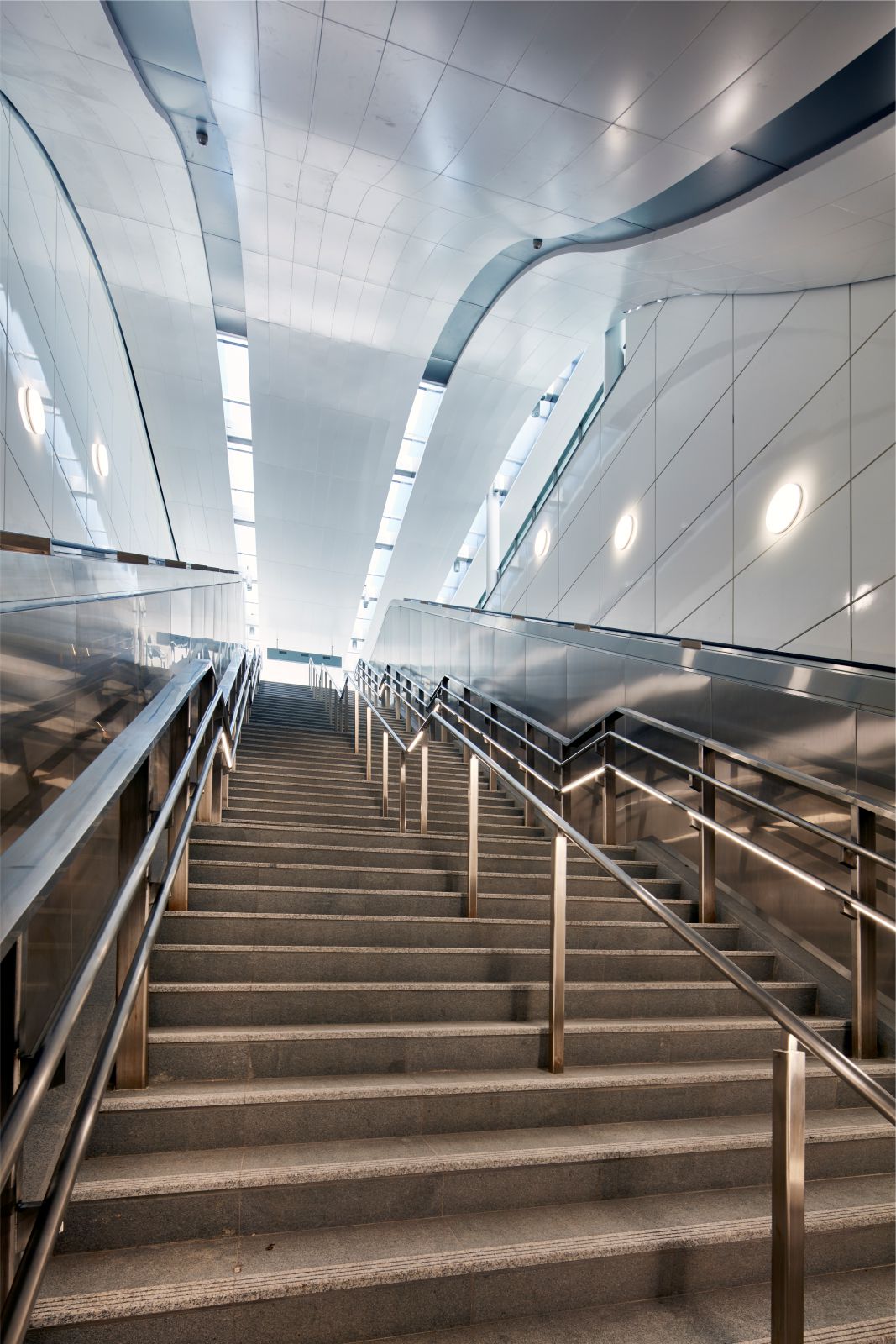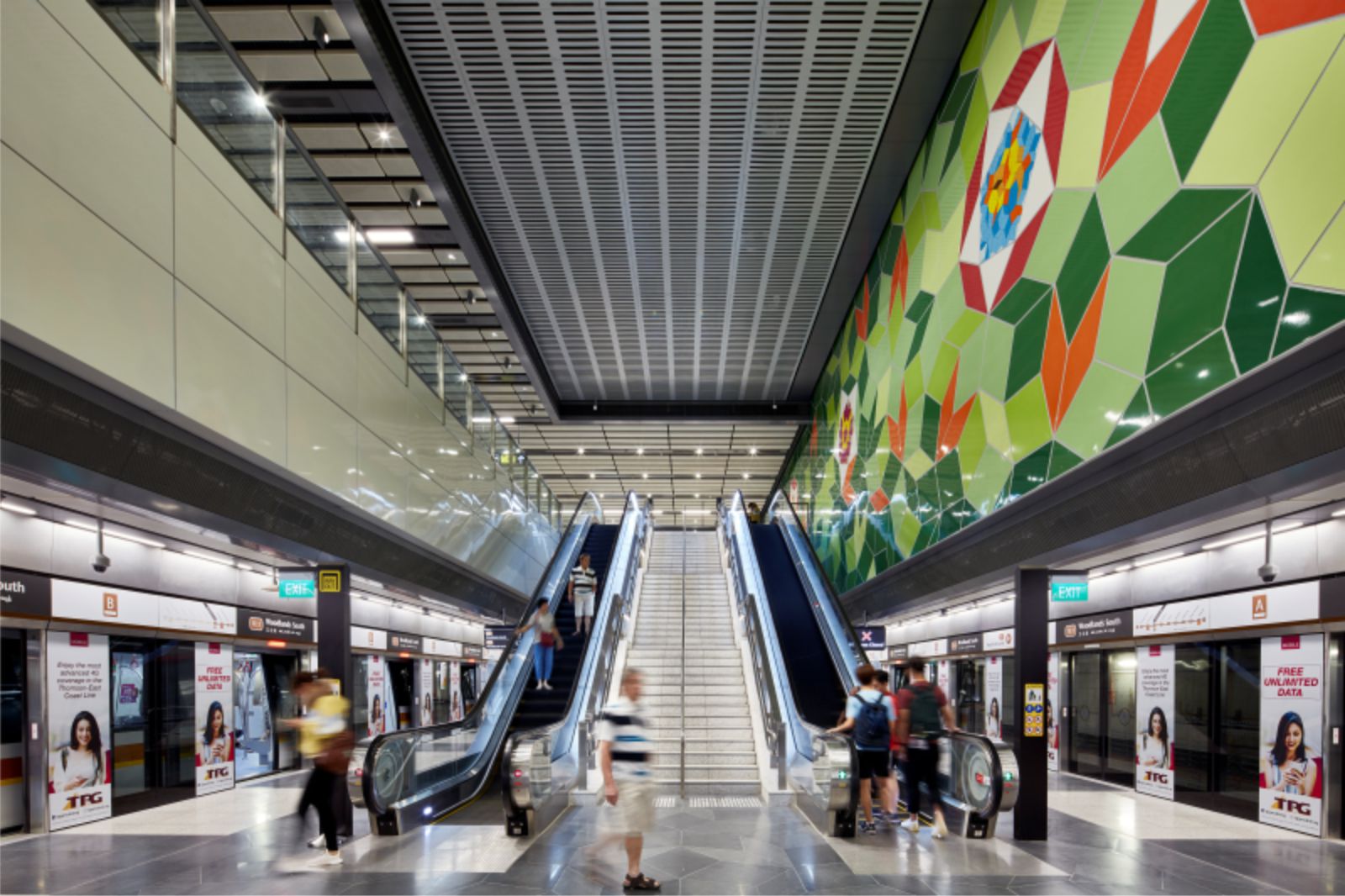Singapore’s Thomson-East Coast Line (TEL) is a fully automated driverless Mass Rapid Transit (MRT) line that stretches from the Marina Bay CBD area to the city’s northern border and along the east coastline to Changi Airport. Spanning 43 km in length, it is the longest MRT line in Singapore and will serve up to 1 million commuters daily upon its full operation in 2025.
The entire transit line was divided into four work packages. Aedas was awarded two out of the four packages, approximating to half the line scope. Aedas has completed the first package of the TEL, comprising of three underground stations: Woodlands North Station, Woodlands Station and Woodlands South Station. The development of the 140,000 sq m TEL Mandai Rail and Bus Depot has also been completed and will aid in the operation of the TEL.
Woodlands Station
Woodlands Station is situated on undeveloped land, adjacent to Causeway Point in Woodlands Singapore. The station will serve as an interchange station for MRT lines to the West, South and East of Singapore. The Woodlands Station entrance integrates skylight and natural ventilation into its structure. The transparency and illumination enable the entrance at night to function as lanterns within the urban landscape.
The platform level of Woodlands Station is provided with banks of escalators and stairs connecting passengers to the station’s concourse through a large and dramatic internal void that enables internal visual transparency. The mechanical and electrical service routes are strategically integrated along the sides beneath the concourse and along the ends of the station to allow uninterrupted station maintenance.
Ceiling mounted integrated service units provide the necessary illumination, acoustic and mechanical functional provisions for the station. The Woodlands Station Interchange Linkway space successfully integrates roof skylights and extensive glazing on the side walls to benefit from natural daylight and connect passengers with their immediate surroundings during the particular time of time.
Sunlight floods in throughout the space in a controlled manner to reinforce passenger wayfinding between stations. Within the design, the Linkway hall utilises natural cross-ventilation principles supplemented by mechanical ventilation to dramatically reduce energy consumption during the lifecycle of the station while continuing to provide passengers comfort.
The northern end of the station provides a pedestrian link-way and serves to connect the station to existing bus interchanges. The southern end of the station accommodates for entrances that lead to civic centres and residential space. The majority of public space is free and unobstructed to create a spacious and uncluttered platform.
The station offers simple and direct circulation patterns that connect the underground with platforms and trains. Inspired by vistas of tropical Pará rubber trees, the design incorporates soft tonal hues of brown and grey with streaks of muted green to accent the grilles and vertical façade. Defined by its natural colourway, the entrance of the Woodlands Station grants passengers a sense of familiarity.
Woodlands North Station
The design of the station implements maximum future-proofing and flexibility to accommodate future commercial and residential developments. The architectural language depicts the eminence of the TEL and Singapore MRT network. The design integrates sophisticated use of form, space and quality to enhances its surroundings and create uncanny familiarity in the space.
The concourse level of the Woodlands North Station enables direct and easy passenger access by locating all vertical circulation provisions of escalators, lifts and stairs immediately past the station fare gates within the vast ticket hall space. The mechanical and electrical service routes are strategically integrated along the sides beneath the concourse and along the ends of the station to allow uninterrupted station maintenance.
The Woodlands North Station entrances are designed with roof level skylights to enable sunlight to flood down towards the below station concourse level in a controlled manner. The utilisation of daylight assists with passenger wayfinding through the station while also providing delight, and dramatically reduces energy consumption during the lifecycle of the station.
Inspired by the Johor Straits coastline, the station’s architectural expression is conveyed through ripples of rolling curvilinear forms reflected within the geometry of the station entrances. The undulating forms are integrated within the roof and ceiling design at station entrances to highlight the vertical circulation provisions of escalators and stairs to passengers. The dramatic void between the station concourse and platform levels enable intuitive wayfinding for passengers.
Woodlands South Station
Woodlands South Station is located at the junction between Woodlands Avenue 1 and Woodlands Drove 16. The primary goal of the station design is to integrate sympathetically and seamlessly into the residential environment. Linear and direct interconnection space are used to offer simple and direct circulation patterns. Direct visibility of all circulation options are achieved from most positions on the open concourse design.
The station’s platform level looks up to a vast internal void, connecting passengers through escalators and staircases. All entrances bring patrons to a linear interconnection space between the station ends and the fare gates. The main entrances of the station offer easy access to commuters, students at Christ Church Secondary School, residents and visitors to the PA’s Community Centre and any future residential development projects.
Enhanced by the use of natural and artificial lighting, openings at entrances are designed to maximise daylight. The interior utilises a simple palette of hard-wearing and robust materials. Woodlands South Station integrates artwork by key local artist Kng Mian Tze, within the fabric of the station design. Penrose-inspired graphic geometry has been utilised to construct the durable internal wall panel system within the public areas of the station.
The unique internal panel system directly incorporates the artwork’s complementary geometric patterns and bright colours to celebrate the local context. The integrated artwork location is strategically positioned to associate with the passenger experience of level change within the station from the ground to the lowest level of the platform. Aedas is currently working on the second work package which consists of 6 more stations on TEL’s south section. Source by Aedas.










